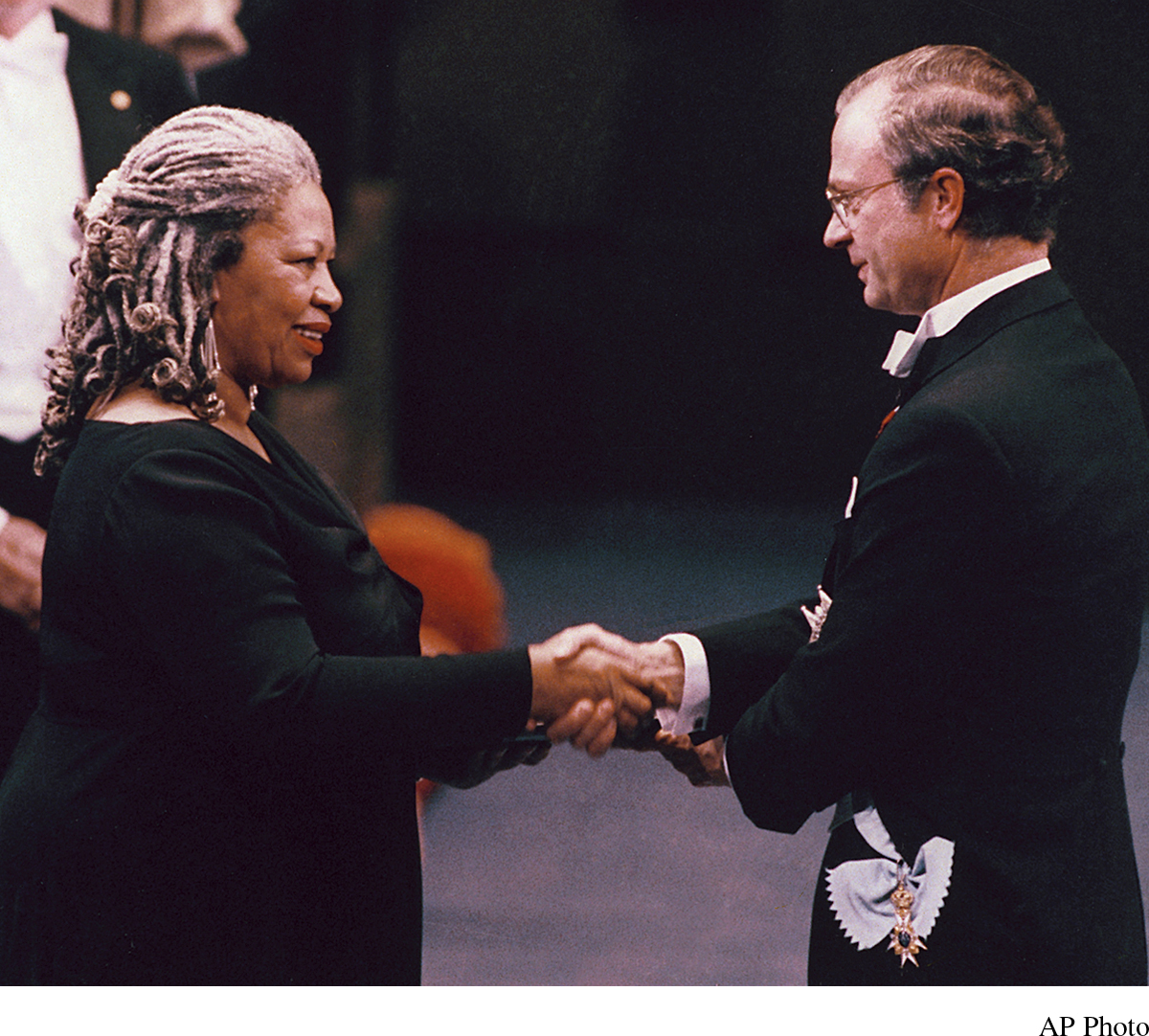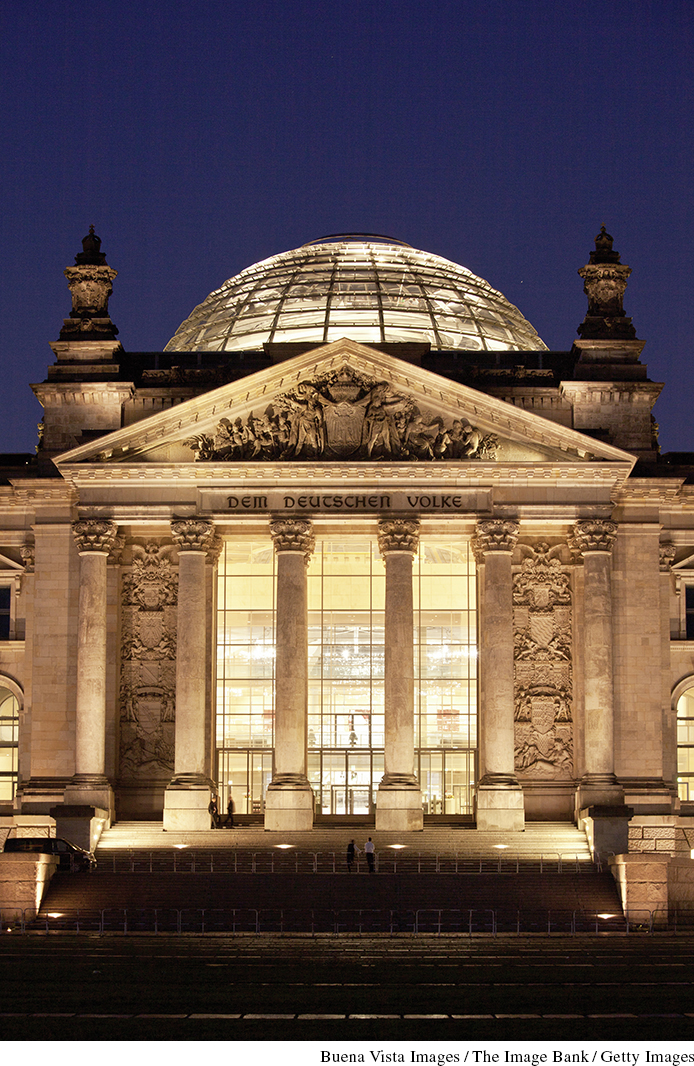A New Global Culture?
Printed Page 999
Important EventsA New Global Culture?
Despite the sense that national boundaries are weakening, cultural exchange flowing in many directions goes back millennia. In the ancient world, Greek philosophers and traders knew of distant Asian religious beliefs, and Middle Eastern religions such as Judaism and Christianity were influenced by them even as these beliefs spread westward to Europe and the Western Hemisphere. Chinese students in Tiananmen Square in 1989 testified to the global power of the West when in the name of freedom they rallied around their own representation of the Statue of Liberty (which itself was a gift from France to the United States). In Japan, businesspeople wore Western-style clothing and watched soccer, baseball, and other Western sports using English terms, while Europeans and Americans wore flip-flops, carried umbrellas, and practiced yoga—all imports from beyond the West.
Remarkable innovations in communications integrated cultures, possibly giving them a Western flavor. Videotapes and satellite-beamed telecasts transported American television shows to Hong Kong and Bollywood movies to Europe and North America. American rock music sold briskly in Russia and elsewhere in the former Soviet bloc. More than 100,000 Czechoslovakian rock fans, including President Václav Havel, attended a Rolling Stones concert in Prague in 1990, showing that despite half a century of supposed isolation under communism they had been well tuned in to the larger world. Young black immigrants forged transnational culture when they created hip-hop and other pop music styles by combining elements of Africa, the Caribbean, Afro-America, and Europe. Athletes like the Brazilian soccer player Ronaldo and pop icons such as Psy and Beyoncé became better known to countless people than their own national leaders. Even moral titans—the Nobel Peace Prize winners Nelson Mandela, former president of South Africa; the Dalai Lama, the spiritual leader of Tibet; and Aung San Suu Kyi, opposition leader in Burma—have been global figures.

As it had done for centuries, the West continued to devour material from other cultures—whether Hong Kong films, African textiles, Indian music, or Latin American pop culture. One of the most important influences in the West came from what was called the boom in Latin American literature. Latin American authors developed a style known as magical realism, which melded everyday events with Latin American history and geography and with elements of myth, magic, and religion. The novels of Colombian-born Nobel Prize winner Gabriel García Márquez were translated into dozens of languages. His lush fantasies, including One Hundred Years of Solitude (1967), Love in the Time of Cholera (1988), and many later works, portray people of titanic ambitions and passions who endure war and all manner of personal trials. García Márquez narrated the tradition of dictators in Latin America, but he also paid close attention to the effects of global business. One Hundred Years of Solitude, for example, closes with the machine-gunning in 1928 of thousands of workers for the American-owned United Fruit Company because they asked for one day off per week and breaks to use the toilet. Wherever they lived, readers snapped up the book, which sold thirty million copies worldwide. García Márquez’s work inspired a host of other outstanding novels in the magical realism tradition, including Laura Esquivel’s Like Water for Chocolate (1989). In the 1990s, the work was translated into two dozen languages and became a hit film because of its setting in a Mexican kitchen during the revolution of 1910, where cooking, sexuality, and brutality are intertwined. Innumerable authors in the West adopted aspects of this style.
Magical realism influenced a range of Western writers, including those migrating to Europe. British-born Zadie Smith, daughter of a Jamaican mother, became a prize-winning author with her novel White Teeth (2000), which describes postimperial Britain through the lives of often bizarre and larger-than-life characters from many ethnic backgrounds. Odd science fiction technology, deep emotional wounds, and weird but hilarious situations guide a plot full of heartbreak. Equally drawn to aspects of the magical realist style, Indian-born immigrant Salman Rushdie published the novel The Satanic Verses (1988), which outraged Muslims around the world because it appeared to blaspheme the Prophet Muhammad. From Iran, the ayatollah Khomeini issued a fatwa (decree) promising both a monetary reward and salvation in the afterlife to anyone who would assassinate the writer. Rushdie’s Italian and Japanese translators were murdered, while his Norwegian publisher survived an assassination attempt. Soaring above them all in terms of global acceptance was British author J. K. Rowling’s series of Harry Potter novels, selling half a billion copies worldwide and being translated into more than seventy languages.
As groups outside the accepted circles engaged in artistic production, battles over culture erupted. U.S. novelist Toni Morrison became, in 1993, the first African American woman to win the Nobel Prize for Literature. In works such as Beloved (1987), A Mercy (2008), and Home (2012), Morrison describes the nightmares, daily experiences, achievements, and dreams of those who were brought as slaves to the United States and their descendants. Some parents objected to the inclusion of Morrison’s work in school curricula, however. Critics charged that unlike Shakespeare’s universal Western truth, the writing of African Americans, native Americans, and women represented only propaganda, not great literature. In both the United States and Europe, politicians on the right saw the presence of multiculturalism as a sign of national decay similar to that brought about by immigration.

In the former Soviet bloc, artists and writers faced unique challenges. After the Soviet Union collapsed, celebrated writers like Mikhail Bulgakov, famous in the West for his novel The Master and Margarita (published posthumously in 1966–1967), became known in his homeland. At the same time, the collapse put literary dissidents out of business. In helping bring down the Soviet regime, they had lost their subject matter—the critique of a tyrannical system. Eastern-bloc writers who formerly found both critical and financial success in the West seemed less heroic, and some were shown to have been part of the Soviet system of reformers. New literature aimed at rethinking the communist experience and eastern Europe’s cultural relationship to the West and to its own past. Andrei Makine, an expatriate Russian author, described the attraction of western European culture and the role of the war and the Gulag on the imaginations of eastern-bloc people, including teenagers. Both Dreams of My Russian Summers (1995) and Once Upon the River Love (1994) describe young people fantasizing about the wealth, sexiness, and material goods of western Europe and the United States. Victor Pelevin wrote more satirically and bitingly in such works as The Life of Insects (1993), in which insect-humans buzz around Russia trying to discover who they are in the post-Soviet world. Pelevin, a Buddhist and former engineer, wrote hilarious send-ups of politicians and the almost sacred Soviet space program, depicting it as a media sham run from the depths of the Moscow subway system in which hundreds of cosmonaut-celebrities are killed to prevent the truth from getting out. For him, “any politician is a TV program,” as he showed in his novel Homo Zapiens (1999), in which politicians are all “virtual”—that is, produced by technical effects, clothing, and scriptwriters.
In music and the other arts, much energy was spent on recovering and absorbing all the underground works that had been hidden since 1917. For example, music lovers were astonished as the work of first-rate composers emerged. Those composers had written their classical works in private for fear that they might contain phrasings, sounds, and rhythms that would be called subversive. Meanwhile, they had often earned a living writing for films, as did Giya Kancheli, who wrote immensely popular music for more than forty films but was in addition a gifted composer of classical music. Alongside great artists, ordinary people in eastern Europe rethought the past, creating ceremonies honoring victims of the Gulag and of Stalin’s purges, with some trying to sort out what the legacy of communism, anti-Semitism, and massive slaughter of fellow citizens had meant to their lives and to history. By 2015, Vladimir Putin had slowed such free reflection on the Soviet past.
Simultaneously, the United States’ success in marketing its culture, along with the legacy of British imperialism, helped make English the dominant international language by the end of the twentieth century. Such English words as stop, shopping, parking, okay, weekend, and rock infiltrated dozens of non-English vocabularies. Across Europe, English served as the main language of higher education, science, and tourism. Already in the 1960s, French president Charles de Gaulle, fearing the corruption of the French language, had banned such new words as computer in government documents, and succeeding administrations followed his path. The ban did not stop the influx of English into daily life, even though the EU’s parliament and national cultural ministries regulated the amount of American programming on television and in cinemas.
American influence in film was dominant: films such as The Matrix Reloaded (2003) and Avatar (2009) earned hundreds of millions of dollars from global audiences. Simultaneously, however, the United States itself welcomed films such as the British Slumdog Millionaire (2009) from around the world. “Bollywood” films—happy, lavish films from the Indian movie industry—had a huge following in all Western countries, even influencing the plots of some American productions. The fastest-growing television market in the United States in the twenty-first century was Spanish-language programming, just one more indication that even in the United States culture was based on mixture and global exchange.

Some have called the global culture of the late twentieth and early twenty-first centuries postmodernism, defined in part as intense stylistic mixing in the arts without following an elite set of standards. Striking examples of postmodern art abound in Western society, including the AT&T Building (now known as the Sony Building) in New York City, which looks sleek and modern. Its entryway, however, is a Roman arch, and its cloud-piercing top suggests eighteenth-century Chippendale furniture. The Guggenheim Museum in Bilbao, Spain, designed by American Frank Gehry and considered bizarre by classical or even modern standards, includes forms, materials, and perspectives that, by rules of earlier decades, do not belong together. Architects working in a variety of hybrid styles completed the postunification rebuilding of the Reichstag in Berlin, whose traditional facade was given a modern dome of glass and steel, along with solar panels. To add to the changing reality, all of these postmodern buildings could be visited virtually on the World Wide Web.
REVIEW QUESTION What social and cultural questions has globalization raised?
Some intellectuals defined postmodernism in political terms as part of the decline of the eighteenth-century Enlightenment ideals of human rights, individualism, and personal freedom, which were seen as modern. This political postmodernism included the decline of the Western nation-state. A structure like the Bilbao Guggenheim was simply an international tourist attraction rather than an institution reflecting Spanish traditions or national purpose. It embodied consumption, global technology, mass communications, and international migration rather than citizenship, nationalism, and rights. These qualities made it a rootless structure, unlike the Louvre in Paris, for example, which was built by the French monarchy to serve its own purposes. Critics saw the Bilbao Guggenheim as drifting, more like the nomadic businesswoman Thérèse, who moved between nations and cultures with no set identity. Cities and nations alike were losing their function as places providing social roots, personal identity, or human rights. For postmodernists of a political bent, computers had replaced the autonomous, free self and bureaucracy had rendered representative government obsolete.